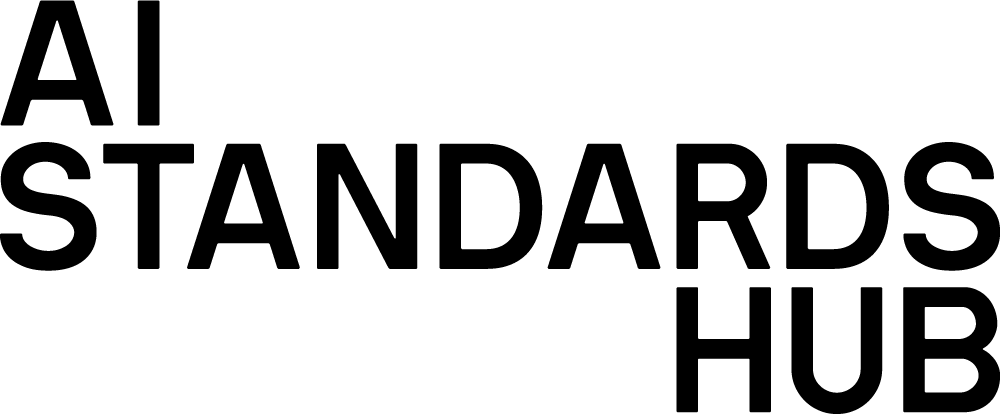1. Introducing AI standards
What sort of standards is the AI Standards Hub focused on
The term ‘standard’ is used to refer to a variety of rules and norms in everyday use, including professional, industry, and ethical standards. As a result, you may wonder what exactly what we are referring to when talking about standards in the context of the Hub’s mission.
Our focus in this introduction – and the focus of the AI Standards Hub – is on standards produced by Standards Development Organisations (SDOs). These standards are sometimes referred to as ‘technical standards’. Standards developed in SDOs are voluntary, and developed through stakeholder-driven processes, according to certain principles such as relevance, transparency, and consensus.
Standards of this kind can be defined as documents developed through consensus-building processes and approved by a recognised body. They provide common and repeatable rules, guidelines and characteristics for activities or their results, and are aimed at providing order in the contexts where they are applied. Standards developed in SDOs can be formally recognised in regulations and international treaties.
What are SDOs
SDOs are organisations that focus on developing and publishing voluntary, consensus-based standards to provide guidance on a range of products, processes, and services.
There are a range of different types of SDOs:
International standards bodies are responsible for global standards development. Three international standards bodies that stand out in terms of their formal recognition and operating model are the International Organisation for Standardisation (ISO), the International Electrotechnical Commission (IEC), and the International Telecommunications Union (ITU).
ISO and IEC are membership organisations with one member organisation from each member country. At ISO, each member country is represented by its national standards body (NSB). At IEC, members are called national committees. The ITU is a United Nations specialised agency and has a different membership structure. Unlike ISO and IEC, organisations can become members of the ITU directly without being represented by the national standards body. Together, ISO, IEC, and ITU form the World Standards Cooperation.
There are a range of independent SDOs that are global in nature. These organisations are not formally authorised by governments, but they develop standards on a wide variety of topics. The Institute for Electrical and Electronics Engineers Standards Association (IEEE SA) is an influential example.
Regional standards bodies
In Europe there are three standards developing organisations which, in terms of their scope of work, are the regional equivalents of ISO, IEC, and the ITU. Cen’s remit corresponds to that of ISO, Cenelec to IEC, and ETSI broadly corresponds to ITU.
Like its counterparts at the international level, Cen is responsible for all formal standardisation in Europe apart from electrotechnical standardisation (which Cenelec is responsible for) and telecommunications (which is covered by ETSI).
National standards bodies
The term National Standards Body (NSB) generally refers to a Standards Development Organisation (SDO) that serves as a country’s member organisation of ISO. As well as a designated National Standards Body, a country may have additional national standards committees. In the UK’s case, the British Standards Institution serves the role of National Standards Body.
BSI contributes to international standards development via its own technical committees. Where this is the case, BSI hosts what are known as mirror committees, which mirror the structure of the European and International technical committees, to ensure a coherent national position. Delegations are selected from the relevant mirror committee, to attend International or European standards committees.
Standards developed by ISO and IEC are typically adopted as British Standards unless there are specific reasons against adoption at the national level.
Throughout this introduction, we will be using the term ‘standards’ rather than the more specific term ‘technical standards’ which is sometimes used when discussing standards developed by SDOs.
Why standards for AI?
Artificial Intelligence poses significant opportunities for society as well as potential risks. One area where AI poses a significant challenge is to the ways that we have traditionally regulated software and other technologies. The autonomy and complexity of AI systems makes it difficult to assign accountability for decisions and harms where they occur. The scalability and international scope of AI makes it difficult to develop governance frameworks with the appropriate scope to guide its use.
Standards provide a promising option for addressing these governance challenges, on an international scale. By convening diverse experts, policymakers, and advocates, standards development processes provide important forums for developing new and innovative governance approaches, which in can respond to the opportunities and challenges brought about by AI.
For example, in recent years ISO has been bringing together global experts to translate established risk and management system standards into the AI context. These standards can provide practical, applicable guidance to organisations, helping to mitigate risks while promoting innovation.


